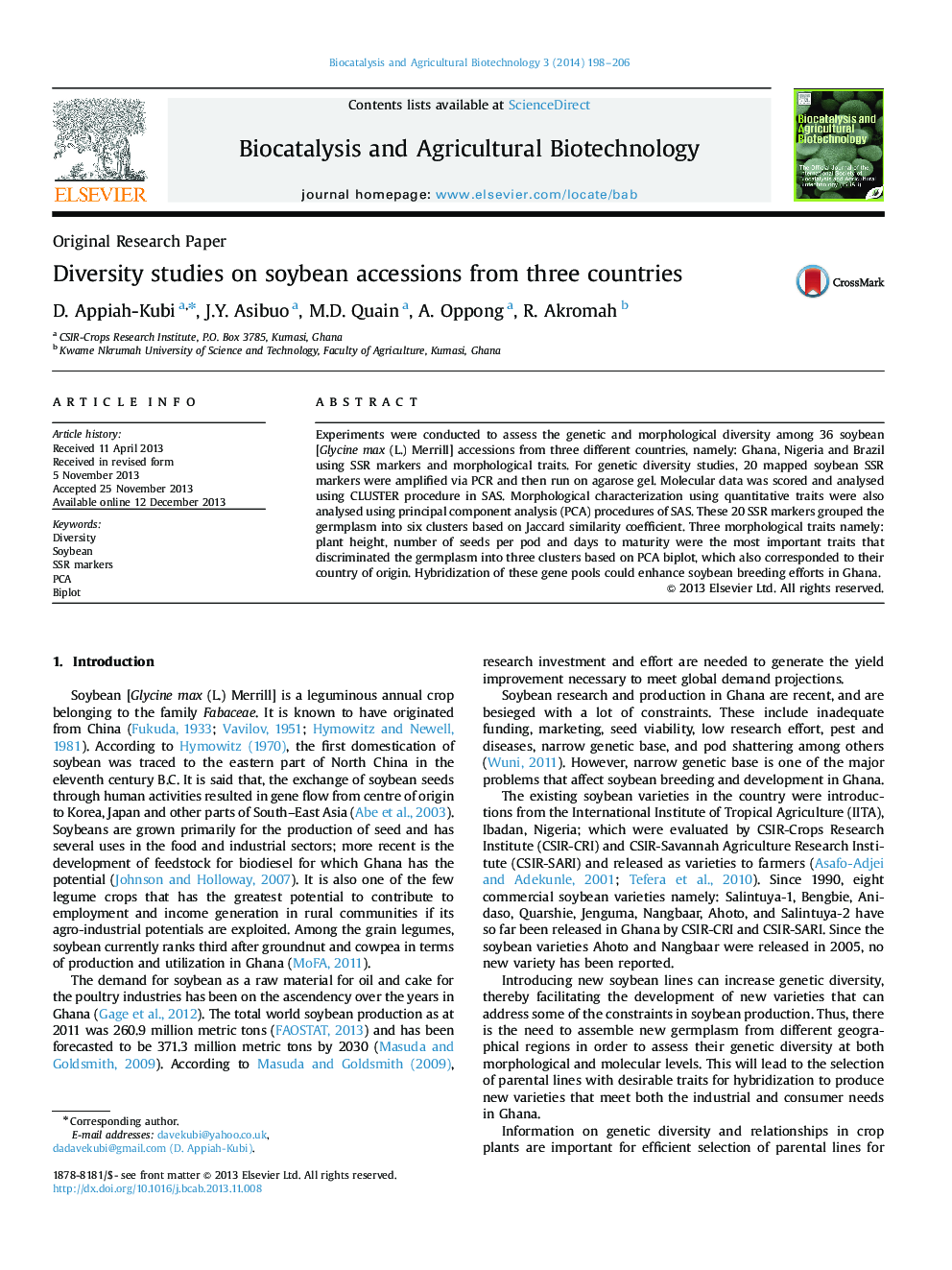| Article ID | Journal | Published Year | Pages | File Type |
|---|---|---|---|---|
| 2075507 | Biocatalysis and Agricultural Biotechnology | 2014 | 9 Pages |
•Diversity studies among 36 soybean accessions from Ghana, Nigeria and Brazil.•20 SSR markers grouped accessions into six clusters using dendrogram at 23% similarity.•Plant height, seed per pod, and days to maturity accounted 76% phenotypic variation.•Three clusters of accessions based on PCA biplot corresponded to their country of origin.•Dendrogram and PCA biplot are useful in selection of suitable parental lines for crosses.
Experiments were conducted to assess the genetic and morphological diversity among 36 soybean [Glycine max (L.) Merrill] accessions from three different countries, namely: Ghana, Nigeria and Brazil using SSR markers and morphological traits. For genetic diversity studies, 20 mapped soybean SSR markers were amplified via PCR and then run on agarose gel. Molecular data was scored and analysed using CLUSTER procedure in SAS. Morphological characterization using quantitative traits were also analysed using principal component analysis (PCA) procedures of SAS. These 20 SSR markers grouped the germplasm into six clusters based on Jaccard similarity coefficient. Three morphological traits namely: plant height, number of seeds per pod and days to maturity were the most important traits that discriminated the germplasm into three clusters based on PCA biplot, which also corresponded to their country of origin. Hybridization of these gene pools could enhance soybean breeding efforts in Ghana.
